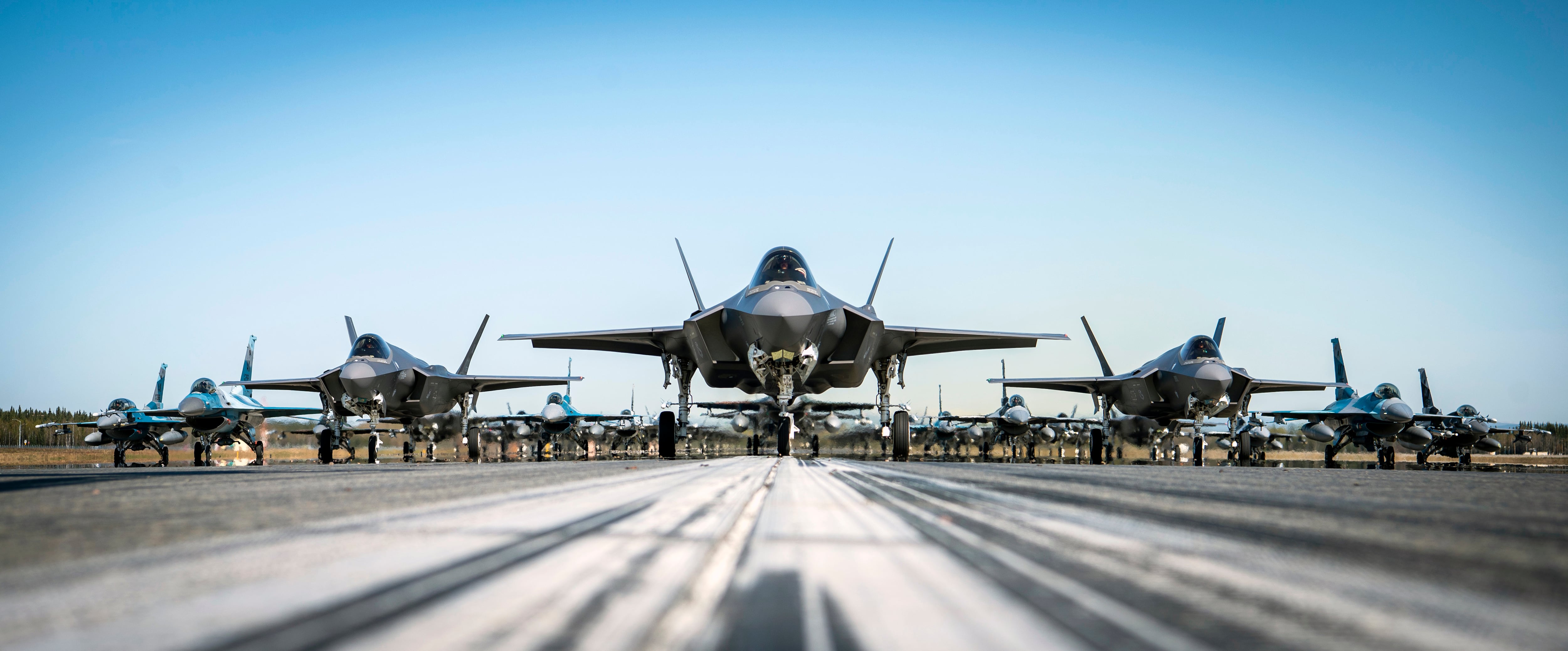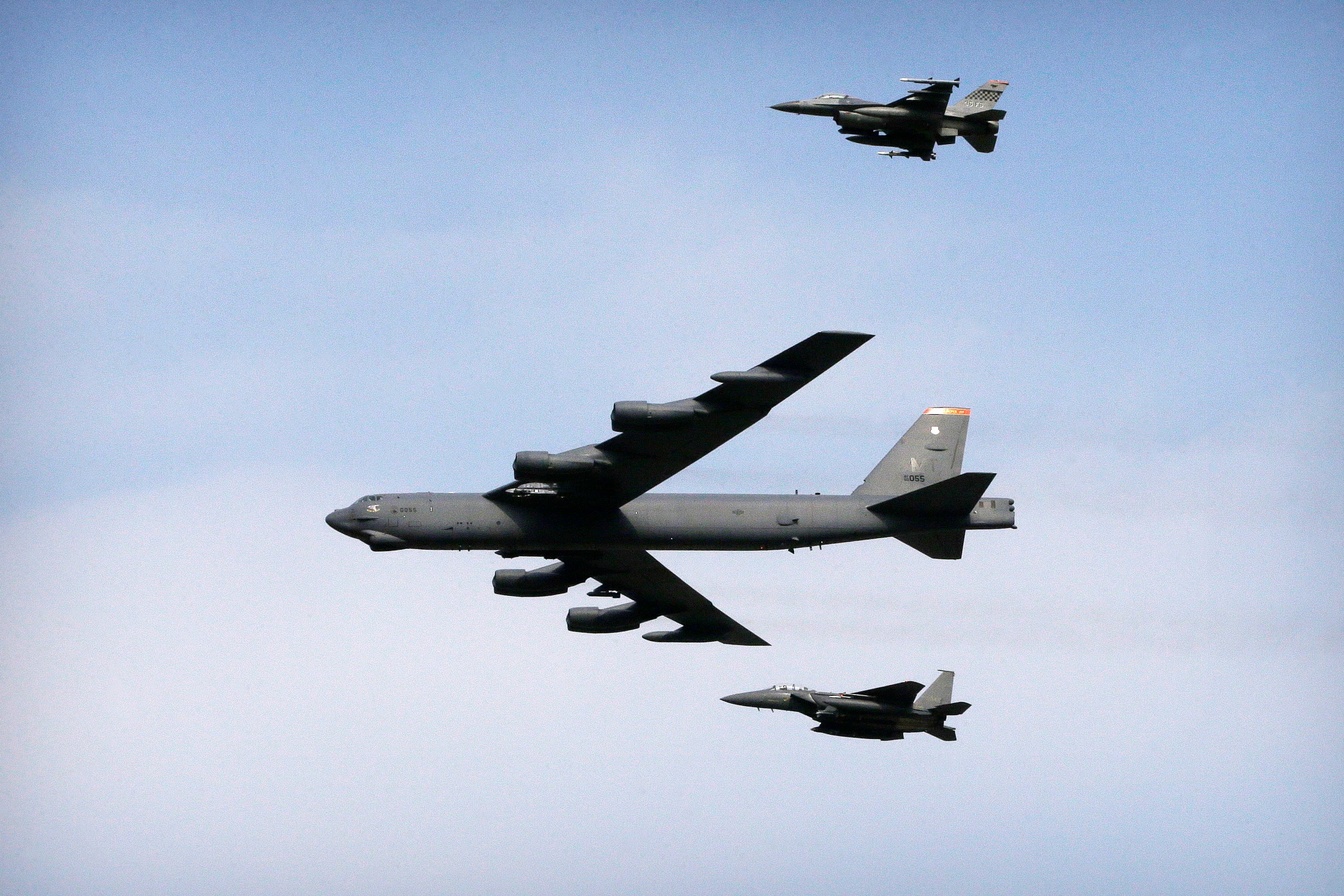The Air Force in 2024 hopes to further shrink its presence in the Middle East to focus more resources on countering China in the Indo-Pacific.
Service officials on Monday asked Congress for $7 billion to fund pared-down operations in the Middle East and Southwest Asia as part of the Biden administration’s fiscal 2024 budget request. That’s $1.6 billion less than it received for those missions in 2023.
The move would pull money away from efforts like Operation Inherent Resolve, the ongoing security effort in Syria and Iraq, and Operation Enduring Sentinel, used to monitor terror group activity in Afghanistan.
RELATED
Instead, the Air Force would bolster its troops and infrastructure in places like Guam and the Northern Mariana Islands. Those projects rely on a different pot of money known as the Pacific Deterrence Initiative.
Cutting spending on the Air Force’s enduring wars by more than 30% over three years reflects a shift “toward the pacing challenge [of China] and making sure that we’re using our funds most effectively,” Kristyn Jones, the Air Force’s interim undersecretary, said during a budget briefing Monday.
Most American airmen in the region are stationed at the hubs of Al Udeid Air Base, Qatar; Al Dhafra Air Base, United Arab Emirates; and Ali Al Salem Air Base, Kuwait, which altogether host more than 17,000 U.S. troops. The Pentagon hasn’t made any decisions to change the Air Force’s footprint in U.S. Central Command, Jones said.
“Most likely, it would be a combination of a number of different factors that would allow us to marginally reduce our costs in that area,” Jones said.
Most of the $7 billion ask — 83% — would fund daily operations and maintenance, from combat and training flights to cyber defense and base upkeep. It’s a fraction of the $70 billion-plus operations budget that keeps the Air Force running around the world.
RELATED

Another $845 million would cover workforce expenses abroad, according to Air Force budget documents. Five major construction projects in Europe would cost another $226 million in the downsized proposal.
Those include storage for quickly deployable “base-in-a-box” kits in Norway, airfield repair tools at RAF Lakenheath and RAF Fairford in the United Kingdom, munitions storage in Spain and other planning and design efforts.
The Air Force didn’t add any European Defense Initiative projects specifically meant to support Ukraine in its war with Russia following President Joe Biden’s trip to Kyiv in February, Jones said. But the visit is shaping future proposals for supplemental funding and shaping how the U.S. thinks about its own defenses.
Air Force Secretary Frank Kendall noted the service is digging into mobility, munitions and electronic warfare as it crafts a new approach to suppressing enemy air defenses.
“One of the lessons, I think, in Ukraine is that [countering air defenses] is really the central thing to be able to do,” Kendall said. “One of the things we’ve been providing to the Ukrainians is some capability to do that mission with the aircraft that they already have.”
“Other countries have invested asymmetrically — Russia and China are both good examples of that — in robust air defense systems, both for surface ships and for land-based … air defense,” he added. “We’re working on a number of things to try to get at that problem.”
As the Air Force looks to bulk up in the Indo-Pacific instead, it has proposed to put $1.9 billion toward the Pentagon’s $9 billion Pacific Deterrence Initiative in 2024.
More than $450 million of that would go toward ensuring the Air Force has jumping-off points across the Pacific from which it can launch attacks if its brick-and-mortar installations are destroyed. The funds would also help make airmen more flexible multitaskers in the field, a concept known as “agile combat employment.”
The plan pursues “a mix of concealment, hardening, pre-positioned essential supplies, tactical mobility, improved expeditionary communications, and both active and passive defenses … in addition to expanding the number of bases from which to operate,” according to Pentagon budget documents.
“We’re generally trying to expand the target set that potential adversaries are gonna have to worry about,” Kendall said March 10. “We’re trying to make the idea of ‘agile combat employment’ meaningful, and that we really have places where … we have prepositioned equipment, in some cases, as well as the other infrastructure we’re going to need to operate successfully.”
RELATED

The Air Force’s slice of PDI plans to add contractors to the region’s mission defense teams, the military’s cyber defense troops that support local units around the globe. Those funds would also bring more F-35A Lightning II fighter jets to the Indo-Pacific and add new winglets to the KC-135 Stratotanker to make it more fuel-efficient.
The coming year could also see progress toward the Pacific Multi-Domain Training and Experimentation Capability, a digital network that links training ranges so troops can practice together in real time.
If Congress enacts the request, the Air Force would build a new flightline for strategic bombers at RAAF Base Tindal, Australia, plus facilities for squadron operations and aircraft maintenance at Tindal and RAAF Darwin. Projects at Kadena Air Base, Japan, would continue work on a maintenance hangar for search-and-rescue helicopters, as well as an area for treating aircraft corrosion.
PDI would also fund aircraft parking in Guam, the island of Tinian in the Northern Mariana Islands, and the Philippines.
“Funding is included for restoration of select airfields in order to expand the number of bases from which to conduct dispersed air operations,” the Pentagon added.
It’s unclear how the budget request could affect the number of American airmen stationed in the Indo-Pacific.
Rachel Cohen is the editor of Air Force Times. She joined the publication as its senior reporter in March 2021. Her work has appeared in the Washington Post, the Frederick News-Post (Md.), Air and Space Forces Magazine, Inside Defense, Inside Health Policy and elsewhere.



